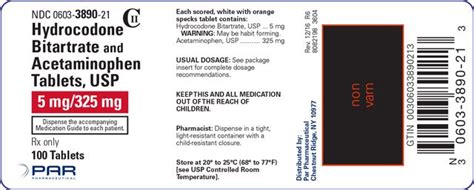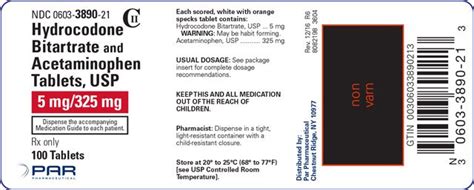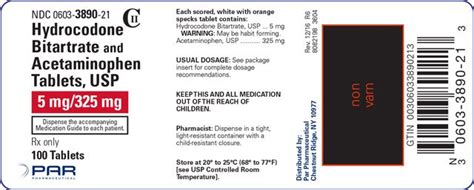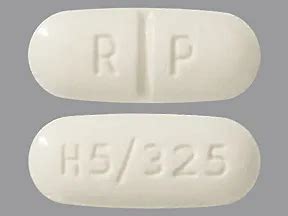Intro
Learn about Hydrocodone Acetaminophen 5mg 325mg dosage, side effects, and interactions. Understand opioid pain relief, acetaminophen safety, and prescription guidelines for effective pain management.
Pain management is a crucial aspect of healthcare, and hydrocodone acetaminophen 5mg 325mg is a commonly prescribed medication for relieving moderate to severe pain. This combination of hydrocodone, an opioid analgesic, and acetaminophen, a non-opioid analgesic, provides effective pain relief for various conditions, including musculoskeletal pain, post-operative pain, and chronic pain. Understanding the proper dosage and usage of hydrocodone acetaminophen 5mg 325mg is essential for both healthcare professionals and patients to ensure safe and effective treatment.
The importance of proper pain management cannot be overstated, as it not only improves the quality of life for patients but also helps prevent the development of chronic pain conditions. Hydrocodone acetaminophen 5mg 325mg is a valuable tool in this regard, offering a potent combination of pain-relieving agents. However, like all medications, it must be used judiciously, with careful attention to dosage and potential side effects. This article aims to provide a comprehensive guide to hydrocodone acetaminophen 5mg 325mg dosage, including its benefits, potential risks, and practical considerations for use.
Introduction to Hydrocodone Acetaminophen 5mg 325mg

Benefits of Hydrocodone Acetaminophen 5mg 325mg

Key Benefits
* Effective pain relief for moderate to severe pain * Synergistic effect of hydrocodone and acetaminophen for enhanced analgesia * Potential for reduced opioid dosage and associated risks * Improvement in quality of life for patients with chronic or acute pain conditionsDosage and Administration

Dosage Considerations
* Start with the lowest effective dose and titrate based on patient response * Maximum daily dose: 6 tablets (30mg hydrocodone and 1950mg acetaminophen) * Do not exceed the recommended dose or take more frequently than prescribed * Use with caution in patients with liver or kidney impairment, as well as in the elderly and those with a history of substance abusePotential Side Effects and Risks

Managing Side Effects
* Monitor for signs of respiratory depression, especially in high-risk patients * Use caution when driving or operating machinery due to potential for drowsiness and dizziness * Stay hydrated to help prevent constipation * Avoid alcohol and other central nervous system depressantsPractical Considerations for Use

Patient Education
* Educate patients on the proper use, potential side effects, and risks of hydrocodone acetaminophen 5mg 325mg * Emphasize the importance of adherence to the prescribed dosage and schedule * Discuss the potential for dependence and the signs of overdose * Encourage open communication about any concerns or side effects experiencedConclusion and Future Directions

As the healthcare community continues to navigate the complexities of pain management, medications like hydrocodone acetaminophen 5mg 325mg will remain important tools. By understanding their proper use, benefits, and risks, healthcare providers and patients can work together to achieve effective pain relief while minimizing adverse outcomes.
What is the typical dosage of hydrocodone acetaminophen 5mg 325mg for pain relief?
+The typical dosage is one tablet every 4 to 6 hours as needed for pain, not to exceed 6 tablets in 24 hours.
Can hydrocodone acetaminophen 5mg 325mg be used for chronic pain management?
+Yes, hydrocodone acetaminophen 5mg 325mg can be used for chronic pain management, but its use should be carefully monitored due to the potential for dependence and side effects.
What are the common side effects of hydrocodone acetaminophen 5mg 325mg?
+Common side effects include drowsiness, dizziness, nausea, vomiting, constipation, and headache. More serious risks include respiratory depression and the potential for dependence and addiction.
We invite you to share your thoughts and questions about hydrocodone acetaminophen 5mg 325mg in the comments below. Your input can help others understand this medication better and facilitate a more informed discussion about pain management. If you found this article helpful, please consider sharing it with others who might benefit from this information. Together, we can work towards better pain care and improved quality of life for those affected by pain.
